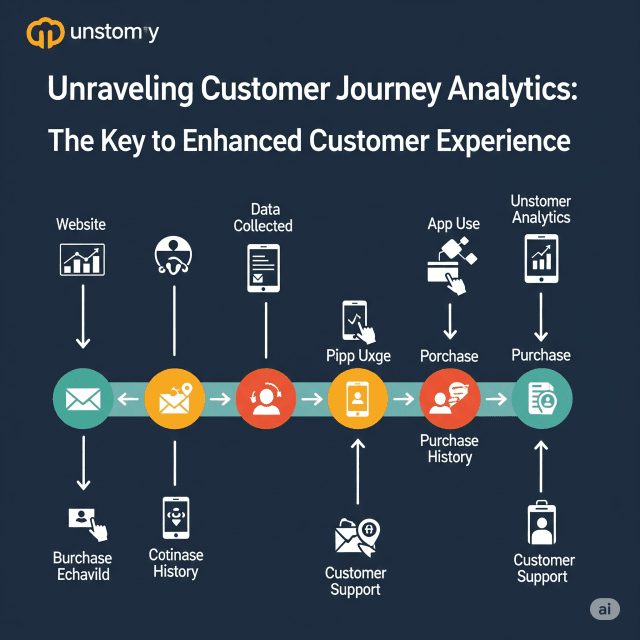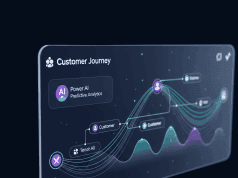In today’s hyper-competitive landscape, businesses are continuously searching for ways to elevate their customer experience (CX). One powerful tool that has emerged as a game-changer is Customer Journey Analytics (CJA). This analytics discipline focuses on understanding and optimizing the entire customer journey by collecting and analyzing data from various touchpoints. By doing so, organizations can enhance interactions, build stronger relationships, and ultimately drive customer loyalty.
Understanding Customer Journey Analytics
Customer Journey Analytics is the process of capturing, analyzing, and interpreting data that reveals how customers interact with a brand throughout their entire lifecycle. This includes every phase from initial awareness to purchase and post-purchase engagement. The primary objective is to visualize the journey and identify pain points, preferences, and opportunities for enhancement.
Key Components of Customer Journey Analytics
Touchpoint Identification: Recognizing all the potential interactions a customer may have with a brand—across channels such as social media, email, websites, and in-person interactions.
Data Collection: Gathering quantitative and qualitative data from various sources, including web analytics, customer surveys, CRM systems, and social media interactions.
Journey Mapping: Visualizing the path customers take, which helps to identify the sequence of interactions and experiences.
Behavior Analysis: Understanding customer behavior and preferences at different stages of their journey, which provides insights into what influences their decisions.
- Feedback Mechanisms: Incorporating customer feedback to continually refine and improve the journey.
Why is Customer Journey Analytics Essential?
1. Holistic View of the Customer
CJA enables businesses to develop a comprehensive view of their customers by knitting together disparate data points. This holistic understanding allows organizations to create personalized experiences that resonate with individual customers.
2. Identifying Pain Points
By analyzing the customer journey, companies can pinpoint areas where customers may experience confusion or frustration. Addressing these pain points can significantly improve customer satisfaction and reduce churn rates.
3. Personalized Experiences
With detailed insights into customer preferences and behaviors, businesses can tailor their offerings and communications. This level of personalization fosters deeper connections and enhances customer loyalty.
4. Informed Decision-Making
CJA provides data-backed insights that empower leaders to make informed decisions. This evidence-based approach minimizes guesswork and helps in strategizing marketing efforts more effectively.
5. Optimized Resource Allocation
By identifying the most effective touchpoints, organizations can allocate resources more efficiently, ensuring that they maximize ROI on marketing and customer engagement initiatives.
Implementing Customer Journey Analytics
1. Invest in the Right Tools
Modern CJA requires leveraging sophisticated analytics tools that can handle data integration and visualization. Popular solutions include CRM systems, data analytics software, and customer engagement platforms.
2. Establish Clear Goals
Define what you want to achieve with customer journey analytics. Common objectives include enhancing customer satisfaction, improving conversion rates, or increasing customer retention.
3. Foster Cross-Department Collaboration
Encouraging collaboration across departments—such as marketing, sales, and customer service—ensures a unified approach to customer experience enhancement. Each department plays a critical role in shaping the customer journey.
4. Continuous Monitoring and Adaptation
Customer preferences evolve, and so should your strategies. Regularly revisiting and refining your analytics efforts is vital to keep pace with changing customer expectations.
5. Leverage Customer Insights
Utilize the insights garnered from your analysis to inform marketing strategies, product development, and customer service enhancements. Customer feedback should continuously shape your approach.
The Future of Customer Journey Analytics
As technology advances, the future of Customer Journey Analytics looks promising. The integration of artificial intelligence (AI) and machine learning can further enhance the personalization of customer experiences. Predictive analytics will allow businesses to anticipate customer needs and tailor offerings proactively.
Moreover, immersive technologies such as augmented reality (AR) and virtual reality (VR) are set to transform how customers interact with brands, providing businesses with even more avenues to explore customer journeys.
Conclusion
In a world where customer experience is paramount, Customer Journey Analytics serves as an indispensable tool for businesses aiming to foster loyalty, drive sales, and maintain a competitive edge. By truly understanding the customer journey and continuously optimizing it, organizations can create lasting connections with their customers, resulting in improved satisfaction and long-term business success. Embracing CJA is not just a trend; it is a strategic necessity for future growth.








